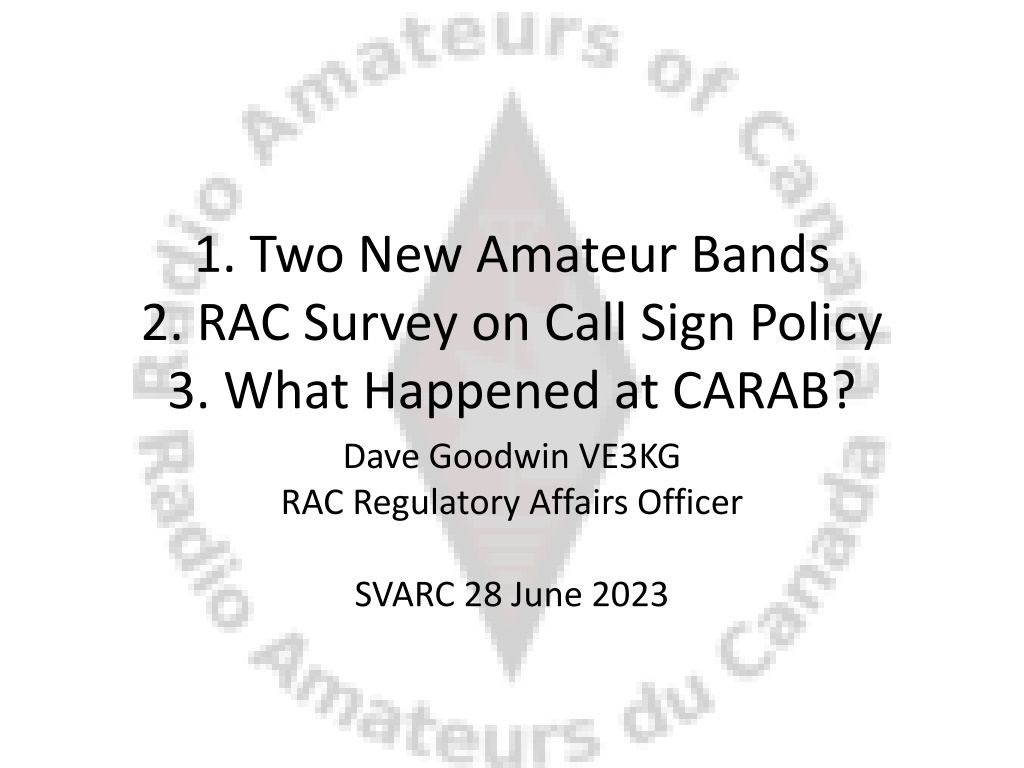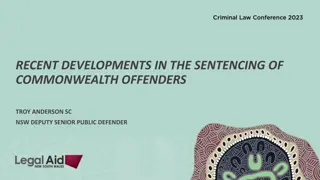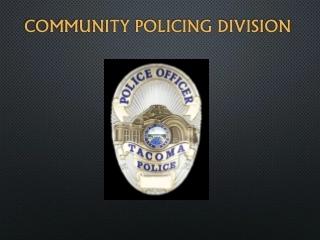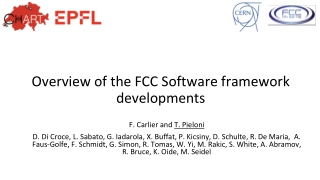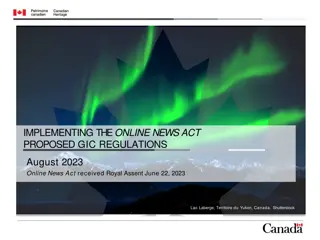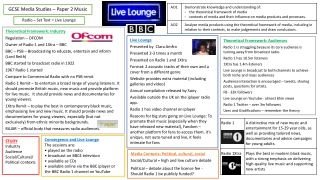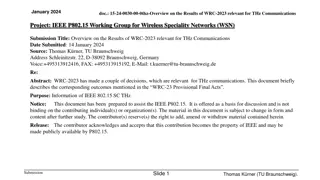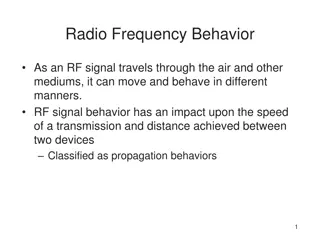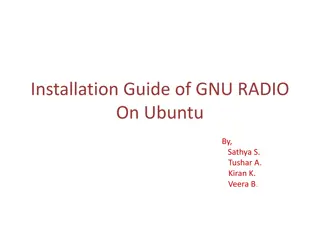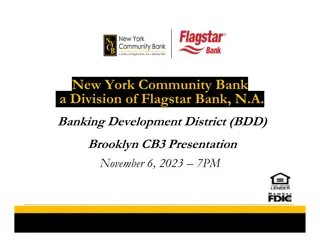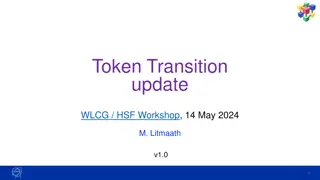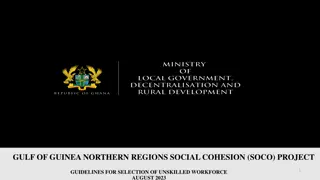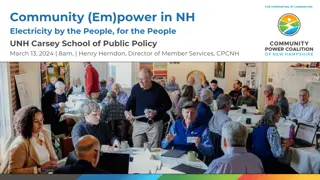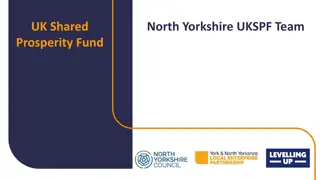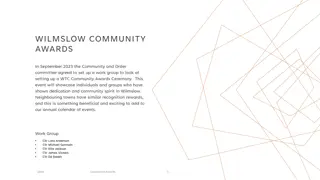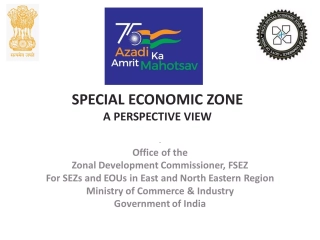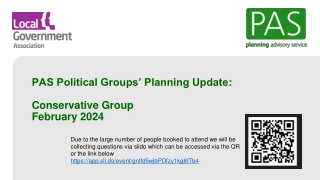Recent Developments in Canadian Amateur Radio Community
Explore the latest updates in the Canadian amateur radio scene, including the addition of new bands, surveys on call sign policies, and key discussions at the CARAB 2023 meeting. Learn about proposed changes to call sign regulations, examination standards, and engagement with ISED for satellite rules and enforcement practices.
Download Presentation
Please find below an Image/Link to download the presentation.
The content on the website is provided AS IS for your information and personal use only. It may not be sold, licensed, or shared on other websites without obtaining consent from the author. Download presentation by click this link. If you encounter any issues during the download, it is possible that the publisher has removed the file from their server.
Presentation Transcript
1. Two New Amateur Bands 2. RAC Survey on Call Sign Policy 3. What Happened at CARAB? Dave Goodwin VE3KG RAC Regulatory Affairs Officer SVARC 28 June 2023
630 metres: 472-479 kHz Only 7 kHz wide 1 kHz maximum emission bandwidth 5 watts EIRP Amateur Radio is secondary Canadian Band plan in draft, soon to be announced IARU Region 2:
60 metres: 5351.5-5366.5 kHz Since 2014, Canadian Amateurs have had five spot frequencies on 60 metres. See http://www.rac.ca/60metres Draft RAC Band Plan IARU Region 2 band plan:
RAC Survey on Call Sign Policy RIC-9 sets ISED s policy on call signs no substantial change since the 1990s. Room for improvement Plan for the future Survey created Clause-by-clause review of current policy Tried some ideas for change 5 August to 31 September 2022 English and French, in an accessible format for the blind Voluntary, anonymous 2,315 responses, every province and territory some demographic data collected
RAC Survey on Call Sign Policy 54 Questions in 15 Sections Demographic info Call Sign Mobility Call Sign Renewal VE call signs Silent Keys Call Signs Single-letter Call Signs (ie., VE1A) Two-letter Call Signs (ie. VE1AA) Three-letter Call Signs (ie. VE1AAA) Using the Unused Canadian Prefixes (CF, CG, CH..., VB, VC, VD..., XJ, XK, XL...) Special Prefixes Special Event Call Signs Contest Call Signs Call Signs for proposed Entry-level certificate holders ISED Documents and ISED fees
CARAB 2023 Canadian Amateur Radio Advisory Board 27 June 2023 1. 2. 3. 4. 5. RAC s Proposals on Call Sign Policy ISED updating RIC-1 to add standards for remote exams RAC s Exam Standards Committee Review of the Question Banks ISED developing rules for Canadian Amateur Satellites RAC and ISED working on developing best practices for Amateurs to engage ISED on Enforcement
Objectives Minimise ARSC s burdens: Death notices Relocations Special call signs for contests permanently eliminate the shortage of two-letter call signs respond to a significant demand for one-letter call signs Fewer Special Prefixes Better choices for Special Event Station call signs, adherence to ITU regulations Incentives for Amateurs to upgrade their skills, knowledge and qualifications protect the traditional VA, VE, VO and VY call areas expand the use of all Canadian prefixes eliminate wastage allow for mobility of call signs for those who move provide a policy that may not require revision for many decades take away nothing from anyone
Canada vs ITU Regulations ITU RR 19.67 to 19.69 One or two characters to identify the country Followed by a numeral Followed by a group of characters Ending in a letter Canadian Practice Begin with VA, VE, VO or VY Followed by a numeral Province, territory or region Followed by two or three letters Ex: VA1AA, VY AAA
What Current Policy does well Protects the existing call area system Extremely quick issuing of call signs Useful utilities to select available call signs Clear rules, uniformly applied Easy access to Special Event Station call signs Easy access to Special Prefixes Good* access to 2x1 calls for contests
What the current policy does poorly Does not detect deceased Amateurs Does not detect disengaged Amateurs Makes two-letter call signs too available, contributing to scarcity Forced break in continuity for people who move Special Event Station call signs do not follow ITU regulations Forced break in continuity for 2x1 call signs for contesters
Phantom Hams To detect the dead and the disengaged: Certificates remain good for life Call signs registered to a certificate for five years Easy-on-line renewal After five years of no contact, a call sign will be suspended The holder has one year to get it back After six years of no contact, a call sign will be made available for re-issue Obligation is on the Amateur to renew ISED does not chase renewals Ex: Ontario car registrations
Two-Letter Call Signs Two-letter call signs (ex: VE1AA): Raise the qualification for a two-letter call Now: 5 Years as a Canadian Amateur, any level of certificate Proposed: 10 Years as a Canadian Amateur + Advanced Abolish the exemption for VE8, VE9, VO2, VY , VY1, VY2 call areas All new Amateurs, anywhere in Canada will be issued a three- letter call sign (ex: VE1AAA) Silent Keys two-letter call signs: Advanced qualification required, any level of experience Exempt from the proposed 10-year rule
A poorly-allocated resource Current Of 24 Canadian blocks: 4 for regular call signs and some Special Event Stns VA, VE, VO, VY 4 for Special Event Stns only 16 for Special Prefixes 1 prefix (VY9) for ISED only 5 ISED stations, all inactive Unused: VA8-9- VO3-4-5-6-7-8-9- VY3-4-5-6-7-8 CF8-9- CJ8-9- VG8-9- XL8-9- Proposed Of 24 Canadian Blocks: 2 for Special Event Stations Conforming to ITU regs 4 for Special Prefixes 18 for regular call signs Protection for traditional call areas Make full use of VO and VY numerals Inducement to upgrade Mobility of most call signs
Comparison: Canada vs USA Current Of 24 Canadian blocks 4 for regular call signs + some Special Event Stns VA, VE, VO, VY 4 for Special Event Stns only VB, VC, VD, VF 16 for Special Prefixes 1 prefix (VY9) for ISED only 5 ISED stations, all inactive Well used: 22% Unbridled Enthusiasm: 66% Unused: 29 prefixes (of 240) 12% waste VA8-9- VO3-4-5-6-7-8-9- VY3-4-5-6-7-8 CF8-9- CJ8-9- VG8-9- XL8-9- US Of 90 US Blocks: 780 total possible special event station call signs (ex: K1A, N1M, W Z) NO Special Prefixes All 90 for regular call signs 780,000 Amateurs 10 million possible call signs Unused: 15 prefixes (of 930) 1.6% waste KP6-7-8-9- NP6-7-8-9- WP6-7-8-9-
Conservation + Revolution New Amateur call signs: CF, CG, CH, CI, CJ, CK CY, CZ XJ, XK, XL, XM, XN, XO Followed by a numeral of no geographic significance Followed by one letter (ex: CF1A) 10 Years + Advanced + Morse One per person, not for clubs Followed by two letters (ex: CF1AA) 10 Years + Advanced One per person, not for clubs Can be registered to an address anywhere in Canada Transportable: as people move, they can move their call signs CY9 and CY reserved for temporary operations from St Paul Island and Sable Island
Conservation + Revolution Protect existing call areas VA1 - VA7 call signs (2x2 and 2x3 ONLY) *Add VA8 and VA9 to NT and NB* VE1 - VE9 call signs (2x2 and 2x3 ONLY) Must be registered to an address in the province or territory historically associated with the prefix If you move, change your call sign VE ships outside Canadian waters (2x2 and 2x3 only) *add satellites, space missions* VA xxx Reserve for proposed entry-level certificate
Conservation + Revolution VO1 (2x2 and 2x3 ONLY) Registered to addresses in Newfoundland VO3 and VO5 reserved as Special Prefixes VO2 (2x2 and 2x3 ONLY) Registered to addresses in Labrador VO4 and VO6 reserved as Special Prefixes VO7, VO9 (2x1 and 2x2 ONLY) Registered to addresses in Newfoundland VO8, VO (2x1 and 2x2 ONLY) Registered to addresses in Labrador
Conservation + Revolution VY (2x2 and 2x3 ONLY) Registered to addresses in Nunavut VY7 and VY8 reserved as Special Prefixes VY7 and VY8 2x1 available to 10 Years + Advanced +Morse) VY1 (2x2 and 2x3 ONLY) Registered to addresses in Yukon VY3 and VY5 reserved as Special Prefixes VY3 and VY5 2x1 available to 10 Years + Advanced +Morse) VY2 (2x2 and 2x3 ONLY) Registered to addresses in Prince Edward Island VY4 and VY6 reserved as Special Prefixes VY4 and VY6 2x1 available to 10 Years + Advanced +Morse) VY9 continues as Government of Canada stations
Special Prefixes In each regular call area, there will be only TWO special prefix alternatives: VA: VB* or VC VE: VF* or VG VO1: VO3 or VO5 VO2: VO4 or VO6 VY : VY7 or VY8 VY1: VY3 or VY5 VY2: VY4 or VY6 *VB is a strategic reserve for growth in the VA/VE call areas. When regular VB calls start to be issued: VB 2x2 and 2x3 calls s may be issued VF becomes the only Special Prefix available to VBs VC becomes the only Special Prefix available to VAs VG becomes the only Special Prefix available to VEs
Special Event Call Signs Use ONLY the VD and VX prefixes Followed by a numeral No geographic significance Followed by 1-8 letters or numerals Ending in a letter 4 to 11 Characters (ex: VD A, VX2 23RIC9U) Exclude VX9xx and VX9xxx format call signs (Experimental Service) Solution to two problems: - Non-conformity with ITU regulations - Numeral problem: VE1 VIMY, VE8 LAN
Problems Non-conformity with ITU regulations: VC3BUFF456 VC4BUFF462 VC7BUFF457 VB3HAIDA8 VC1933 VC1HARC9
Problems Special Event Stations *** existing prefix and number has proven too restrictive: VE1 VIMY VE8 LAN
Contest Call Signs Delete the current policy Worked poorly for users One-year cooling-off period made continuity of use impossible Replace with permanent 2x1 call signs C.. And X.. Calls anywhere in Canada VO7-8-9- Newfoundland and Labrador VY3-4-5-6-7-8 Yukon, PEI, Nunavut
Other issues Cooling-off period Surrendered call signs are withheld from re-issue for one year Special Suffixes Information on acceptable methods for modifying one s call sign: /P or using the word portable when operating from a temporary location away from their registered address /M or using the word mobile when operating a mobile station on land /MM or using the words marine mobile or maritime mobile when operating aboard a water vessel, either inside or outside Canadian territorial waters /AM or using the words aeronautical mobile when operating aboard an aircraft /R or Rover to indicate the operator is changing locations frequently, a practice used in some Amateur Radio contests above 50 MHz /VE1 or portable VE1 (example) when operating a portable or mobile station and they wish to indicate in which call area they are located. The correct practice is to use the VE1-9, VO1-2, VY -1-2 call area prefix associated with the area in which they are located. In this example, adding /VE1 or portable VE1 is used to indicate the operator is in Nova Scotia. /### or stroke followed by one or more numerals, used to indicate an activity of some significance, such as an anniversary of a radio club or some public event. This guidance should affirm that none of these are regulatory requirements, but they represent the most commonly-used acceptable methods of modifying one s call sign in the Amateur Service.
CARAB 2023 Canadian Amateur Radio Advisory Board 27 June 2023 1. 2. 3. 4. 5. RAC s Proposals on Call Sign Policy ISED updating RIC-1 to add standards for remote exams RAC s Exam Standards Committee Review of the Question Banks ISED developing rules for Canadian Amateur Satellites RAC and ISED working on developing best practices for Amateurs to engage ISED on Enforcement
Your Turn Questions Comments Complaints Accusations Threats Share your opinions with: RAC Regulatory Affairs Officer: Dave Goodwin VE3KG regulatory@rac.ca RAC Director for Ontario North and East: By-election on now: dir.ontario.north.east@rac.ca RAC Director for Quebec: Guy Richard VE2QG/VE2XTD dir.quebec@rac.ca
